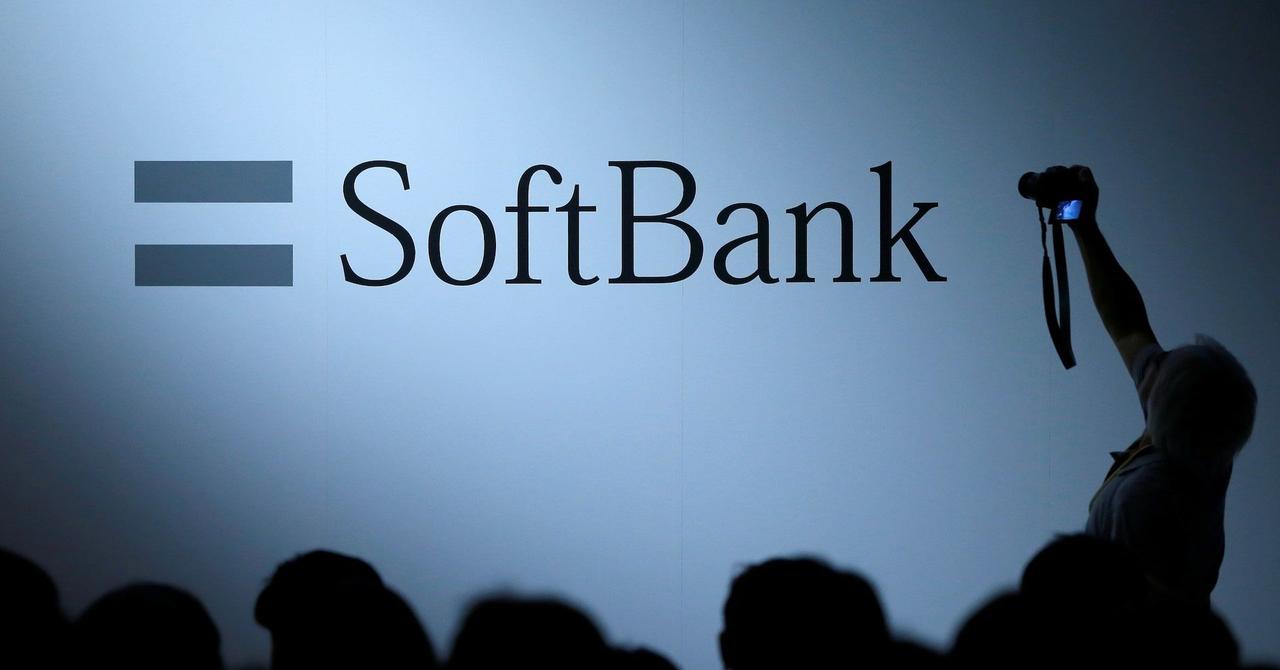AI Adoption in the Workplace: Enthusiasm Wanes as Employees Hide Usage
4 Sources
4 Sources
[1]
Employees are hiding their AI use from their managers. Here's why
According to new research from Slack, the hype around artificial intelligence (AI) is dwindling. "For the first time since generative AI arrived on the scene, sentiment and uptake among desk workers is starting to cool," the report published on Tuesday states. In August, Slack surveyed over 17,000 desk workers in the US, UK, Australia, Brazil, Canada, France, Germany, India, Italy, Japan, the Netherlands, Singapore, Spain, Sweden, and Switzerland as part of their Workforce Index, which Slack's Workforce Lab publishes periodically. Also: I've tested a lot of AI tools for work. These are the four I use almost daily to get more done - faster Though 99% of the executives surveyed said they'll invest in AI this year (with 97% saying they feel "some level of urgency" to use the tech), employees are no longer as jazzed. Here's why. The survey found that 48% of desk workers felt uncomfortable with their manager knowing they use AI "for common workplace tasks" like messaging, writing code, brainstorming, and data analysis, citing fears of being seen as cheating and appearing lazy or less competent. This builds on Slack's earlier research from June, which revealed employees aren't always sure how they're allowed to use AI at their workplace. That concern contributed far less to employees' reticence to admit AI use -- only 21% of respondents cited restrictive company AI policies as a disincentive. Also: Want a programming job in 2024? Learning any language helps, but only one is essential "Our research shows that even if AI helped you complete a task more quickly and efficiently, plenty of people wouldn't want their bosses to know they used it," said Christina Janzer, head of Slack's Workforce Lab. "Leaders need to understand that this technology doesn't just exist in a business context of 'Can I get the job done as quickly and effectively as possible,' but in a social context of 'What will people think if they know I used this tool for help?'" Moreover, the findings indicate an interesting behavioral conundrum in AI adoption which speaks more to its cultural perception than its hopeful (and actual) impact. The report also predicts that Gen Z and Millenials are most comfortable using AI and are at risk of the tech "degrading social connection." Slack found that 81% of AI users ask AI tools for advice instead of a peer or friend. From September 2023 to March 2024, global AI adoption had increased to roughly a third of all desk workers, the report explains. But in the last three months, growth has slowed. "France saw just two percentage point growth, from 31% to 33% of desk workers trying AI, and the U.S. saw just a single percentage point growth, from 32% to 33% of desk workers," the report says. Also: AI spending to reach $632 billion in the next 5 years, research finds Globally, the reported excitement dropped from 47% to 41%, much of which Slack credits to the US. In the last months, workers who reported being enthused about using AI -- dropped from 45% to 36%. The change was even more dramatic in France, where enthusiasm plummeted by 12%, from 53% to 41%. In contrast to the dominating narrative around AI's value at work, Slack found that employees want AI to help "refocus their time on meaningful activities, but they suspect that AI could lead to more busy work and increased workload." Many AI companies and businesses implementing agentic systems, copilots, and other forms of AI-powered workflow automation characterize the tech as freeing up time and reducing busywork, as do AI tools geared towards individual productivity. Also: I changed 5 ChatGPT settings and instantly became more productive - here's how However, proper setup may also be the issue. According to the report, "a persistent lack of training continues to hamper AI uptake; 61% of desk workers have spent less than five hours total learning how to use AI." Most (76%) desk workers urgently want to upskill, reportedly due to industry trends and personal career goals. Ironically, Slack found that skill-building and learning are the top activities that "desk workers wish AI would give them more time to focus on." Also: Google's new AI tool could be your new favorite learning aid - and it's free In some ways, this shift was expected, considering Gartner's tech hype cycle. But Slack says it identified other reasons excitement is waning, including "uncertainty around and discomfort with AI norms" and "perception that AI is not yet living up to the hype," in addition to lack of upskill training. Based on the findings, Slack encourages leaders to make the most of employees' existing motivation by investing in AI training, even in 10-minute increments of what Slack calls "AI microlearning." The report also suggests laying out clear policy guidelines for AI use so employees don't feel lost.
[2]
Workers feel embarrassed using AI tools at work
Many workers say they're embarrassed to use AI at work. The latest research from Slack reveals a troubling plateau in AI tool adoption among workers, with many feeling both anxious and embarrassed about utilizing these technologies in their roles. Over the past few months, just a modest increase from 32% to 33% in reported AI usage has been noted, despite a compelling desire from executives for employees to engage more with AI. Slack's Workforce Index, which surveyed over 17,000 global "desk workers," indicates that nearly half of US workers are hesitant to admit they use AI tools, fearing they may be perceived as lazy or even cheating. This anxiety can be attributed to a lack of clear guidance on appropriate use, leaving many employees uncertain about how and when to integrate AI into their workflows. Moreover, 48% of respondents expressed discomfort in discussing their AI use with managers, highlighting the stigma still attached to such tools. In contrast, workers who felt comfortable communicating their AI-related activities with management reported a 67% higher likelihood of actually using AI in their work. Meanwhile, 76% of survey participants stated they have an urge to enhance their AI skills, reflecting a broad desire for knowledge in an increasingly tech-driven environment. However, two-thirds of workers indicated they've spent fewer than five hours on AI training, and nearly 30% claimed they received no training whatsoever. Janzer emphasized that the onus is now on organizations to lower these barriers to use, stating, "Too much of the burden has been put on workers to figure out how to use AI." Encouraging a more open dialogue about AI integration and offering genuine guidance can help alleviate much of the discomfort felt by employees. She added that "the arrival of AI agents -- with clearly defined roles and guidelines -- will also help with adoption, alleviating the ambiguity and anxiety many workers feel around using AI at work." Google and Microsoft have committed to hybrid work arrangements Interestingly, Slack's report highlights a notable disconnect in the expectations between executives and their teams. While companies desire employees to invest their time -- freed up by AI -- into innovation and skill development, employees report that they often redirect this extra time towards mundane tasks and existing projects, rather than exploring new avenues. "Workers are very confused about when it is socially and professionally acceptable to use AI at work," said Christina Janzer. This confusion can carry significant implications for productivity and innovation as firms look to stay competitive in an increasingly digital landscape. Additionally, Slack points out that companies have expressed concerns around leveraging the technology swiftly, citing risks such as information security and accuracy that can hamstring AI initiatives. As organizations ready themselves to invest in AI tools, it becomes essential for them to establish clear communication about acceptable AI use practices. Janzer urges, "Employers and employees both have a really important role to play here in accelerating AI adoption and helping to push past this plateau that we're seeing in the data." Creating an environment conducive to learning and experimentation with AI tools could ease employees' fears, ultimately leading to greater engagement with the technology. The survey results reflect a crucial need for firms to develop and implement training programs, set clear guidelines, and encourage collaboration between management and employees in navigating the intricacies of AI usage. By doing so, organizations stand a better chance of overcoming barriers to adoption and fostering a more empowered workforce eager to explore the potential of AI in their daily tasks.
[3]
Many workers say they're embarassed to use AI at work -- despite bosses wanting them to do more
However many companies and bosses want workers to do more AI work The use and adoption of AI tools in the workplace appears to be plateauing among employees, new research from Slack has claimed. The latest Workforce Index survey from the online collaboration platform found adoption rates of AI tools have stalled over the last three months, increasing from 32% to just 33%, with slowing engagement from workers in the US seemingly one of the major factors. This is despite bosses and executives having a strong appetite for adopting AI tools at work as the hype around the technology shows little sign of abating. Slack's survey consulted over 17,000 workers across the world, defined as "desk workers" who covered roles from "executive management" down to "skilled office worker", and uncovered a growing sense of uncertainty and discomfort when it comes to using AI at work. Much of this concern seems to reflect a lack of guidance over the use of AI technology in many offices and workplaces, with workers unsure how much they could start utilizing the assistance. Admitting they were using AI tools to bosses was apparently a major factor for US workers, almost half (48%) of whom said they were concerned they would be seen as lazy or incompetent for using the technology - or even accused of cheating. However, workers who said they were comfortable talking about their use of AI with their manager were 67% more likely to have used it for work - and many workers said they were keen to learn more and gain better AI skills, with 76% saying they felt an urgency to become an AI expert. This rush could partly be because nearly two-thirds (61%) of workers say they have spent less than five hours total learning how to use AI, and 30% say they've had no AI training at all. Going forward, the onus now appears to be on the companies themselves, as having AI adoption stall could be a major issue when it comes to staying competitive. The survey found that bosses do want their employees to work on AI training, hoping the skills will make them more innovative and allow for more work on existing projects. However Slack notes that making the workplace more open to AI tools, and giving proper guidance, will be what really matters to workers. "Too much of the burden has been put on workers to figure out how to use AI. To ensure adoption of the technology, it's important that leaders not only train workers, but encourage employees to talk about it and experiment with AI out in the open," said Christina Janzer, SVP of Research and Analytics at Slack. "The arrival of AI agents - with clearly defined roles and guidelines - will also help with adoption, alleviating the ambiguity and anxiety many workers feel around using AI at work." she continued.
[4]
CEOs (Still) Love AI, But Employees Are Over It
Nearly all executives surveyed (99%) say they plan to invest in AI, and most feel a "level of urgency" to do so (97%). Yet interest among those who actually use the tools has cooled and nearly leveled off in the US. The percentage of Americans who report feeling excited about AI helping them complete their tasks dropped from 45% to 36% over the past three months. Interest also dropped in other countries surveyed, such as France (53% to 41%), Japan, and the UK. "With so many businesses making AI investments right now, these findings are a real wakeup call to leaders," says Christina Janzer, head of Slack's Workforce Lab. Keep in mind that Slack may have a vested interest in boosting employee interest in AI since it has invested in AI features. Other companies, such as Anthropic, are also targeting AI in the workplace and hoping employees embrace it. The Slack survey found a slight increase in AI usage, up one percentage point between March and August 2024 for US respondents (32% to 33%). In fairness, that's way up from just a year ago, but a slowing growth rate. Is it a natural lull or a greater issue? Some experts say AI has entered the "trough of disillusionment," a low point in the Gartner hype cycle before the technology eventually reaches a more stable, productive state. Like the executives, most employees (76%) also feel a sense of urgency to "become an AI expert," citing industry trends and personal goals. There's also a perception that younger employees, especially college graduates, have more AI skills than the average employee. Employees feel the tech can help with administrative tasks (87%), core work projects (80%), and innovative or creative work projects (81%). At the same time, they worry AI will "actually increase their workload -- with leaders expecting them to do more work at a faster pace," says Janzer. AI has also become a taboo subject, with nearly half (48%) of all survey respondents saying they would feel uncomfortable admitting to their manager that they used AI. Many feel like it's cheating (47%), could make them seem less competent (46%), or make them appear lazy (46%). Methodology: The survey polled 17,372 workers in Australia, Brazil, Canada, France, Germany, India, Italy, Japan, the Netherlands, Singapore, Spain, Sweden, Switzerland, the UK, and the US and was fielded between Aug. 2-30, 2024.
Share
Share
Copy Link
Recent research reveals a growing disconnect between executive enthusiasm for AI and employee hesitation, with workers hiding AI use due to fears of being perceived as lazy or incompetent.

AI Adoption Plateaus as Employee Enthusiasm Cools
Recent research from Slack's Workforce Index has revealed a significant shift in the landscape of AI adoption in the workplace. Despite continued enthusiasm from executives, employee interest in AI tools has cooled, leading to a plateau in adoption rates
1
.Executive Enthusiasm vs. Employee Hesitation
The survey, which polled over 17,000 desk workers across 15 countries, found that 99% of executives plan to invest in AI this year, with 97% feeling a sense of urgency to implement the technology. However, this enthusiasm is not mirrored among employees, where AI adoption has only marginally increased from 32% to 33% in the US over the past three months
2
.The Hidden Use of AI
Perhaps most striking is the revelation that 48% of desk workers feel uncomfortable with their managers knowing they use AI for common workplace tasks. Employees cite fears of being perceived as cheating, lazy, or less competent as reasons for hiding their AI use
1
.Declining Excitement and Regional Variations
Global excitement about AI in the workplace has dropped from 47% to 41%. The decline is particularly pronounced in the US, where enthusiasm plummeted from 45% to 36% in just three months. France experienced an even more dramatic decrease, with excitement falling from 53% to 41%
3
.Training Gap and Desire for Upskilling
The research highlights a significant training gap, with 61% of desk workers having spent less than five hours learning to use AI. Despite this, 76% of workers express an urgent desire to upskill in AI, driven by industry trends and personal career goals
4
.Related Stories
Perceptions of AI's Impact on Workload
While AI is often touted as a tool to reduce busywork, employees suspect it might actually increase their workload. There's a concern that leaders may expect more work to be done at a faster pace due to AI assistance
1
.The Way Forward
Christina Janzer, head of Slack's Workforce Lab, emphasizes the need for clear guidelines and open communication about AI use in the workplace. She suggests that the arrival of AI agents with defined roles could alleviate much of the ambiguity and anxiety workers feel about using AI at work
2
.As organizations continue to invest in AI, it's crucial for them to address these concerns by providing adequate training, establishing clear usage policies, and fostering an environment where employees feel comfortable discussing and experimenting with AI tools
3
.References
Summarized by
Navi
[2]
[3]
[4]
Related Stories
Recent Highlights
1
Meta acquires Manus for $2 billion, adding revenue-generating AI agents to its platforms
Business and Economy

2
Nvidia locks in $20 billion Groq deal, securing AI chip rival's technology and talent
Business and Economy

3
Geoffrey Hinton warns AI job replacement will accelerate in 2026 as systems gain new capabilities
Technology








